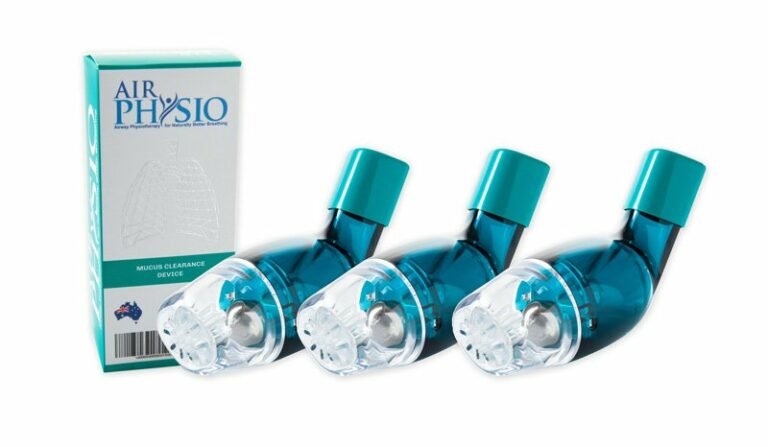Why Lung Health Matters on World MS Day – And Every Day
Each year on May 30, the world unites to recognise World MS Day – a powerful movement that brings together the global Multiple Sclerosis (MS)
Lung capacity refers to the total amount of air inside the lungs at certain phases of the respiratory cycle. The several components of lung capacity have different characteristics and may be altered by lung and airway conditions, age and lifestyle choices.
Several lung conditions can affect lung capacity and make breathing slowly become more difficult over time. These lung conditions may be classified as either obstructive lung disease or restrictive lung disease.
The average human respiratory rate is 30-60 breaths per minute at birth,[1] decreasing to 12-20 breaths per minute in adults. The average total lung capacity of an adult human male is about 6 litres of air.
The maximum amount of air an adult male can hold is 6 litres, and your lungs mature by the time you are about 20-25 years old. After about the age of 35, their function declines as you age, and as a result, breathing can slowly become more difficult over time.
People with obstructive lung disease have airflow limitation due to the inability to completely expel air from the lungs. Because of narrowing of the airways, an abnormally increased amount of air remains in the lungs at the end of full exhalation. Some conditions related to obstructive lung disease include:
In obstructive lung disease, the FEV1 is reduced due to an obstruction of air escaping from the lungs. Thus, the Index of Air Flow or Tiffeneau-Pinelli Index (FEV1/FVC ratio, see Index of Air Flow or Tiffeneau-Pinelli Index below) will be reduced. More specifically, according to the National Institute for Clinical Excellence, the diagnosis of COPD is made when the FEV1/FVC ratio is less than 0.7 or 70%, and the FEV1 is less than 80% of predicted; however, other authoritative bodies have different diagnostic cutoff points.
On the other hand, people with restrictive lung disease have difficulty expanding their lungs when they inhale. The difficulty filling lungs with air often results from stiffness in the lungs themselves and in other cases, chest wall stiffness, weak muscles or damaged nerves. Some conditions related to restrictive lung disease include:
In restrictive lung disease, both forced expiratory volume in one second (FEV1) and forced vital capacity (FVC) are reduced, however, the decline in FVC is more than that of FEV1, resulting in a higher than 80% the Index of Air Flow or Tiffeneau-Pinelli Index (FEV1/FVC ratio, see Index of Air Flow or Tiffeneau-Pinelli Index below).
Spirometry is a common test used to measure lung capacity, specifically the amount and flow of air that can be inhaled and exhaled. This test is used to diagnose conditions that affect lung conditions, such as COPD and asthma, as well as to monitor the severity of these conditions and their response to treatment.
During the test, you are asked to take the deepest breath possible and exhale into the mouthpiece of the device as hard as possible and for as long as possible. A clip will be placed on your nose to prevent air from leaking out. You will need to do the test at least three times to make sure the results are relatively consistent.
The common measurements used are as follows:
1. Forced Vital Capacity (FVC) is the maximum volume of air which can be exhaled or inspired during either a maximally Forced Vital Capacity (FVC) or a Slow Vital Capacity (VC) manoeuvre. i.e. the amount of air which can be forcibly exhaled from the lungs after taking the deepest breath possible. FVC is used to help determine both the presence and severity of lung diseases. Unit of measurement is the volume of air measured in litres.
2. Vital Capacity (VC) is normally equal to Forced Vital Capacity (FVC) unless airflow obstruction is present, in which case VC is usually higher than FVC, i.e. is the maximum amount of air a person can expel from the lungs after a maximum inhalation. It is equal to the sum of inspiratory reserve volume, tidal volume, and expiratory reserve volume. Unit of measurement is the volume of air measured in litres.
A normal adult has a vital capacity between 3 and 5 litres. A human’s vital capacity depends on age, sex, height, mass, and ethnicity.
3. Forced Expired Volume (FEV) or Forced Expired Volume in 1 second (FEV1) is the volume expired in the first second of maximal expiration (exhaling air) after a maximal inspiration (deep breath) and is a useful measurement of how quickly full lungs can be emptied. Unit of measurement is the volume of air expired in 1 second, measured in litres in 1 second.
4. Index of Air Flow or Tiffeneau-Pinelli Index
Index of AirFlow or Tiffeneau-Pinelli Index is a calculated ratio used in the diagnosis of obstructive and restrictive lung disease. It represents the proportion of a person’s vital capacity that they can expire in the first second of forced expiration. Forced Expired Volume divided by Vital Capacity equals % Index of Airflow, as shown below.
Depending on whichever volume is higher out of VC or FVC, the result is expressed as a percentage of the VC or FVC and gives a clinically useful index of airflow limitation. Normal values are approximately 80%.
5. Peak Expiratory Flow (PEF) is the maximal expiratory flow rate achieved, and this occurs very early in the forced expiratory manoeuvre.
Normal spirogram showing the measurements of forced vital capacity (FVC), forced expired volume in one second (FEV1) and forced expiratory flow over the middle half of the FVC (FEF25-75%). The left panel is a typical recording from a water-sealed (or rolling seal) spirometer with inspired volume upward; the right panel is a spirogram from a dry wedge-bellows spirometer with expired volume upward.
Normal maximal expiratory and inspiratory flow-volume loop.
Source: Rob Pierce and David P. Johns, Spirometry – The Measurement and Interpretation of Ventilatory Function in Clinical Practice (Australia, 1995, 2004, 2008), 4.
Another factor affecting lung capacity is aging. Several changes happen to our body as we get older, and at about age 36, the function of the lungs starts to decline. As we get older, the diaphragm gets weaker, decreasing the ability to inhale and exhale. The ribcage changes shape and is less able to expand and contract with breathing. The lung tissue and airways lose elasticity, change shape and some close. The nervous system goes through natural changes with time, as well. The nerves in the airway become less sensitive to foreign particles, and the particle build-up in the lungs can damage the lung tissue and cause partial or full blockages in the airways.
Your lung capacity also improves with a healthy lifestyle, such as doing regular exercise and maintaining an active lifestyle. Studies show that aerobic activity leads to a larger lung capacity for both males and females, and a greater lung capacity leads to a more efficient respiratory system to distribute oxygen throughout the body. Physical inactivity and smoking have, of course, the opposite effect to the capacity of the lungs to expand and function. Most adults nowadays do not meet the current recommendation of at least 30 minutes of moderate physical activity on 5-7 days per week. Smoking and sedentary lifestyle both are negatively associated with healthy lungs, causing a person to have lower lung capacity.
In addition to regular exercise, an effective way of increasing lung capacity is the use of an all-natural, drug-free process called Oscillating Positive Expiratory Pressure (OPEP). The AirPhysio® device is an airway physiotherapy device that uses the OPEP process to open closed and semi-closed airways with positive expiratory pressure and improve airway clearance through the vibration of the airway. You can feel the device working as soon as you blow into the device.
AirPhysio comes in 3 different versions to accommodate for different lung capacities and conditions. These include the following:
1. AirPhysio Children/Low Lung Capacity – for children and people with a low lung capacity version who need airway physiotherapy for mucus clearance to help improve their lung capacity and clear obstructions.
2. AirPhysio CleanMyLungs – for people with average lung capacity who need airway physiotherapy for mucus clearance and improve lung capacity before their condition worsens.
3. AirPhysio Sports – for people with healthy lungs who need to open up their airways and give their airways a good clean out before a workout or an event.
AirPhysio® increases lung capacity, reduces breathlessness during exercise, increases exercise tolerance, and speeds up recovery times after working out or training. AirPhysio® also assists with clearing the airway for individuals suffering from cystic fibrosis, asthma, bronchiectasis, atelectasis, Chronic Obstructive Pulmonary Diseases (COPDs) such as chronic bronchitis and emphysema, or other conditions producing retained secretions.
AirPhysio® is a 100% Australian made and is proudly supporting Asthma Australia.
References:
The Difference Between Obstructive and Restrictive Lung Disease
Lung Capacity and Aging
http://cssf.usc.edu/History/2004/Projects/J1022.pdf
What Is Forced Vital Capacity (FVC)?
Vital capacity
FEV1/FVC ratio
Spirometry
Restrictive lung disease
Vital capacity
Lung volumes
Each year on May 30, the world unites to recognise World MS Day – a powerful movement that brings together the global Multiple Sclerosis (MS)
Asthma is more common than many people realise — affecting over 262 million individuals around the world. Yet despite how many lives it touches, asthma
In the pursuit of optimal respiratory health, understanding and implementing techniques like Chest Percussion can be a game-changer. This method, designed to enhance lung function
AirPhysio may be able to help by assisting with
✅Clearing the mucus clogging airways
✅Helps Promote Optimal Lung Capacity
✅Helps Promote Optimal Lung Hygiene
✅Helps treat Respiratory Conditions
✅May Reduce the chance of developing lung infections
✅Recommended by doctors, physical Therapists & Pulmonologists
✅Helps Make Breathing Easier
✅Sold in 106 countries globally


Do you suffer from Dry or Persistent Cough, Breathlessness, Respiratory or Severe Respiratory Conditions, or Shortness of Breath as you Get Older?

THIS PRODUCT MAY NOT BE RIGHT FOR YOU. READ THE WARNINGS BEFORE PURCHASE (Contraindications of Untreated pneumothorax; Tuberculosis; Oesophageal surgery; Right-sided heart failure; Middle ear pathology, such as ruptured tympanic membrane)
FOLLOW THE DIRECTIONS FOR USE
IF SYMPTOMS PERSIST, TALK TO YOUR HEALTH PROFESSIONAL

Gallery
AirPhysio is an Oscillating Positive Expiratory Pressure (OPEP) device that is used for mucus clearance and lung expansion to help in the treatment of respiratory conditions. The use of the AirPhysio device helps to facilitate secretion mobilization and maximize lung volume for cleaner healthier lungs.
© AirPhysio 2022 – All Rights Reserved
| Cookie | Duration | Description |
|---|---|---|
| cookielawinfo-checkbox-analytics | 11 months | This cookie is set by GDPR Cookie Consent plugin. The cookie is used to store the user consent for the cookies in the category "Analytics". |
| cookielawinfo-checkbox-functional | 11 months | The cookie is set by GDPR cookie consent to record the user consent for the cookies in the category "Functional". |
| cookielawinfo-checkbox-necessary | 11 months | This cookie is set by GDPR Cookie Consent plugin. The cookies is used to store the user consent for the cookies in the category "Necessary". |
| cookielawinfo-checkbox-others | 11 months | This cookie is set by GDPR Cookie Consent plugin. The cookie is used to store the user consent for the cookies in the category "Other. |
| cookielawinfo-checkbox-performance | 11 months | This cookie is set by GDPR Cookie Consent plugin. The cookie is used to store the user consent for the cookies in the category "Performance". |
| viewed_cookie_policy | 11 months | The cookie is set by the GDPR Cookie Consent plugin and is used to store whether or not user has consented to the use of cookies. It does not store any personal data. |
13 Responses
Fantastic items from you, man. I’ve be mindful your stuff prior to and you’re just too great. I actually like what you have bought right here, certainly like what you’re stating and the way in which by which you are saying it. You’re making it entertaining and you still take care of to keep it wise. I cant wait to learn much more from you. This is really a great site.
Thank you Clifford, Please follow and Like our Facebook page https://www.facebook.com/airphysio and it will keep you posted of other articles which we post.
of course like your web-site but you have to check the spelling on several of your posts. A number of them are rife with spelling problems and I find it very troublesome to tell the truth however I will surely come back again.
Hi Clifford, Thank you for the feedback, we will check on the posts and see if we can find what you are talking about. Thank you again and have a great day. Paul
Hello There. I discovered your blog using msn. That is a very neatly written article. I will be sure to bookmark it and return to read more of your useful information. Thank you for the post. I will definitely return.
Thank you N Gsiarj, I’m glad that you like this and we appreciate the feedback. Kind Regards Paul O’Brien
I do believe all of the ideas you have offered on your post. They’re very convincing and will definitely work. Nonetheless, the posts are very quick for newbies. Could you please lengthen them a bit from subsequent time? Thank you for the post.
A fascinating discussion is worth comment. I think that you ought to publish more on this issue, it may not be a taboo subject but usually people do not speak about such issues. To the next! Kind regards!!
I am genuinely delighted to read this website posts which carries tons of useful facts, thanks for providing these kinds of statistics.
wonderful post, very informative. I ponder why the opposite specialists of this sector do not notice this. You should continue your writing. I am sure, you have a great readers’ base already!
It’s an awesome article in support of all the web people; they will get advantage from it I am sure.
Awesome article.
Thanks , I hav just been searching for info approximately this topic ffor agges and yours
iis the best I have came upoon so far. However, what
in regards to the bottom line? Are you certain about the
source?